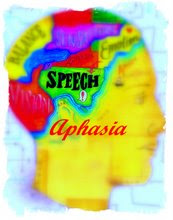Thursday, February 15, 2007
Visual thinking
Posted by iRDMuni at 10:48 PM 0 comments
Labels: Brain aphasia stroke therapy college student health Survival
Hemispheric contributions to pragmatics.
Twenty-seven patients with right-hemisphere damage (RBD) and thirty-one patients with left-hemisphere damage (LBD) received a new pragmatics battery in Hebrew consisting of two parts: (1) comprehension and production of basic speech acts (BSAs), including tests of assertions, questions, requests, and commands, and (2) comprehension of implicatures, including implicatures of quantity, quality, relevance, and manner. Each test had a verbal and a nonverbal version. Patients also received Hebrew versions of the Western Aphasia Battery and of the Right Hemisphere Communication Battery. Both LBD and RBD patients were impaired relative to controls but did not differ from each other in their overall scores on BSAs and on Implicatures when scores were corrected by aphasia and neglect indices. There was a systematic localization of BSAs in the left hemisphere (LH) but not in the right hemisphere (RH). There was poor localization of Implicatures in either hemisphere. In LBD patients, BSAs were associated with language functions measured with the WAB, suggesting the radical possibility that the classic localization of language functions in aphasia is influenced by the localization of the BSAs required by aphasia language tests. Both BSAs and implicatures show greater functional independence from other pragmatic, language and cognitive functions in the RBD than in the LBD patients. Thus, the LH is more likely to contain an unmodular domain-nonspecific set of central cognitive mechanisms for applying means-ends rationality principles to intentional activity.
PMID: 10857742 [PubMed - in
Posted by iRDMuni at 10:28 PM 0 comments
Labels: Brain aphasia stroke therapy college student health Survival






















































